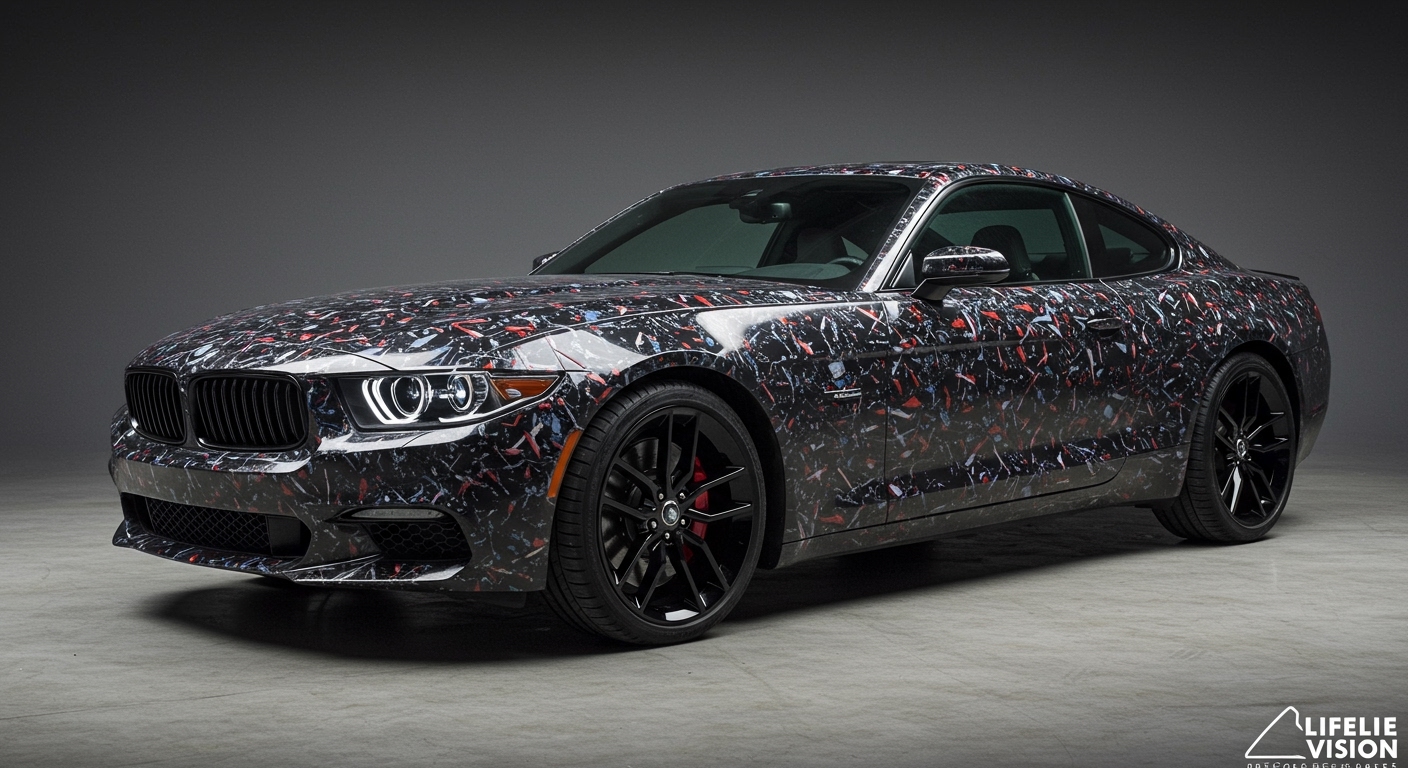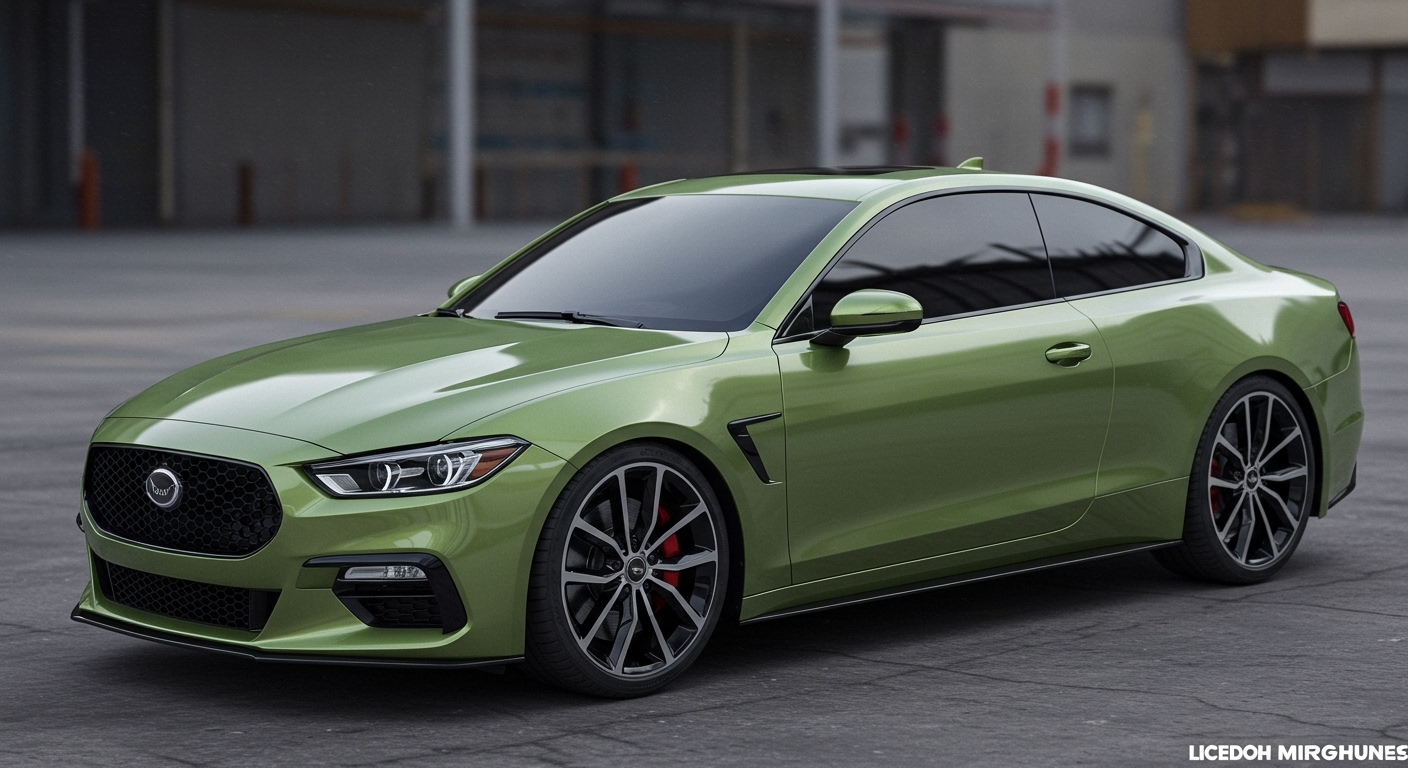It is annoying to see your car peeling paint. The surface begins to become dull, patchy and old-fashioned. This has been a problem for many car owners especially after years of rain and sunlight exposure in the UK. The average car age in the UK roads is over nine years according to the Society of Motor Manufacturers and Traders (SMMT). This means paint damage is now more common than ever.
People often ask, “Can I fix peeling paint with a vinyl wrap?” The answer is not always simple. A wrap can completely transform how your car looks, but only if the surface is properly prepared. When paint peels, the wrap cannot stick well. To make it last, you must fix the base first before applying a wrap.
Car wrapping has become a favourite car paint alternative in the UK. It lets drivers change colour, finish, and texture without repainting. But wrapping over damaged paint will not give the clean, smooth result people expect.

The Problem: Poor Surface Adhesion
Vinyl wrap adheres most effectively to a clean and smooth surface. The peeling, bubbles, or cracks of the paint make the wrap not adhere effectively. The adhesive film must have a solid base so that it bonds evenly. When paint flakes, the wrap forms air pockets and bumps. These imperfections become visible through the film, ruining the final look. Loose paint can even peel off further, taking parts of the wrap with it.
Guides like Car Wrap vs Paint: Which Is Best for You explain this clearly. Vinyl works beautifully only on stable, properly prepared surfaces. Without preparation, wrapping becomes a short-term fix that fails quickly.
Imagine placing tape on a dusty wall, it won’t stick well. The same logic applies to wrapping a car with peeling paint. Poor surface adhesion is the number one reason wraps lift or bubble soon after installation.
The Solution: Why You Must Sand and Prime First
Before applying any vinyl wrap, preparation is the key step. The first step you should make is to sand out all the old and damaged paint. This assists in producing even texture in order to better adhesion.
Good primer then is applied after the sanding. The primer fills small gaps and seals the surface. It makes the vinyl adhesive and uniform. Without primer, even the best wrap might fail within months.
As explained in installation tips from TeckWrap UK, good preparation guarantees better results. Their professional guide shows that sanding and priming prevent bubbles, wrinkles, and edge lifting. Here’s what you should always do before wrapping a peeling surface:
- Remove all loose paint using sanding tools or sandpaper.
- Clean the car’s body with a mild surface cleaner.
- Apply a strong primer for better bonding.
- Let the surface dry completely before wrapping.
Any of these steps should not be skipped as this will lead to problems in the future. The small damage in the form of a crack or a flake may spread and spoil the appearance of the wrap. That is why experts always stress preparation before wrapping over peeling paint.
How Peeling Paint Guarantees a Failed Wrap
Trying to apply vinyl wrap over damaged paint will only cause frustration. The wrap may look good for a few days but will soon start lifting. As the old paint continues to flake, it pulls the wrap away. This process causes visible bubbles and edges to peel. The wrap becomes uneven and may even tear in extreme cases. When the wrap lifts, dirt and moisture enter, making the issue worse.
Articles like Does a Car Wrap Damage Paint? explain this point clearly. A wrap does not harm healthy paint. However, when paint is already peeling, applying vinyl can worsen the damage. The loose paint beneath the wrap moves and cracks, making the car look worse.
Once this happens, future wraps become harder to apply. You’ll need to remove the film, sand the area again, and start over. It becomes time-consuming and more expensive than proper preparation would have been. If your car paint is peeling, never view wrapping as an instant fix. Instead, treat it as the final step after surface restoration.
Wrapping as a Car Paint Alternative After Proper Prep
Once the surface is smooth, wrapping becomes a great car paint alternative. It is an economical method of bringing your vehicle back to life without needing a complete (and expensive) painting. The car wrap market in the UK has been expanding at a very fast rate in the past few years. It is stylish, flexible, and cheaper among the options settled on by many car owners. Wrap also safeguards your car paint against the UV rays and dust, as well as minor scratches.
Once you have fixed the peeling parts, you can make your car look like it was a brand new one with a wrap bought from TeckWrap UK. They are completely customizable as they come in a variety of colours and finishes. Finishes can include matte, gloss and satin or metallic finishes that bring a distinct look. Benefits of choosing wrapping after preparation include:
- Full transformation without repainting.
- Lower cost compared to professional resprays.
- Added protection for your original paint.
- Easy removal when you want a new design.
An increasing number of drivers in the UK are wrapping their vehicles in 2025 than ever before. When properly done, wrapping is beautiful and practical. It’s proof that a vinyl wrap can replace traditional paint when proper preparation is done first.
When Wrapping Isn't the Right Solution
However, not every car is suitable for wrapping. If your car’s paint is severely damaged, wrapping might not work well. Deep rust, corrosion, or uneven panels make the wrap appear bumpy or stretched. When the damage covers large areas, even primer may not fix the surface fully. In these cases, it’s better to repaint or repair before wrapping. If rust keeps spreading, the wrap will fail faster and look unattractive.
Body repair ensures a strong, even base for the wrap. Without it, the wrap will expose flaws rather than conceal them. Bumps and cracks are more visible under the sun due to the reflective finish of vinyl wrap. Wrapping is not the most effective option in case the surface of your car is too rough. Repainting gives a solid base that can later support wraps. The pros and cons of wrapping assist in determining the right time to wrap.

Final Thoughts
Most drivers believe that wrapping will cover their peeling paint, and it does not work so. Does wrapping a car damage the paint? No, it doesn’t when paint is healthy and stable. However, wrapping over damaged paint makes the problem worse. A wrap needs a strong foundation to bond and perform well. That is why sanding and priming are essential before applying vinyl. After repairing the damaged sections, wrapping can make your car look marvelous.
One of the most suitable upgrades to UK car owners in 2025 is the vinyl wrapping. It is stylish, flexible and provides long-lasting protection when used well. However, keep in mind, no wrap can be stuck to a broken surface. To success, everything begins with preparation.
Turn your old paint into a new, professional level vinyl wrap from TeckWrapUK. Visit our website to explore colours, textures, and finishes perfect for your car. Restore your vehicle’s beauty with quality wrapping after proper surface preparation.
